
views
Making Parachutes out of Napkins

Unfold your napkin and decorate your parachute with felt tip markers. Carefully unfold your dinner napkin and lay it on a flat surface. If you would like to decorate your parachute sail, place the napkin on top of a piece of newspaper, cardboard, or scrap paper. Use felt tip markers to draw on your sail.

Cut 4 even pieces of string. Unwind the string and cut off a strand that is approximately 1 foot (0.30 m) long. Unwind the string. Lay the cut strand next to the unwound string as though it were a ruler. Cut the second strand the same length as the first. Cut 2 more strands in the same manner. You could also use a 12 inch ruler.

Attach 1 string to each corner. Gather and twist the napkin’s top left corner ½ inch from the edge. Tie 1 string tightly around the gathered corner—create the knot near the top of the strand. Repeat this process on every corner, making sure to tie all of the strings at approximately the same spot. This will result in long tails that are the same length.

Tie the strings together and attach a weighted object. Gather all four strings together 2 to 3 inches above the bottom and tie the strings in a knot. Select an object to add weight to the parachute, such as a rock, an action figure, or paperclips. Use the 2 to 3 inch (5.1 to 7.6 cm) tails to secure the object to the parachute.
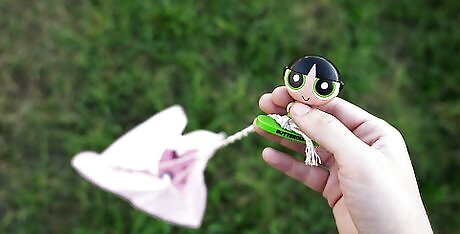
Drop your paper parachute. Now that you have created your paper parachute, it is ready for action. Decide where you will drop your parachute from—this may be over the banister of your stairs, from a play structure, or even from the top bunk of a bunk bed. You may even simply throw it up into the air. Once you have reached the top of your launch zone, release the parachute and watch it glide to the ground.
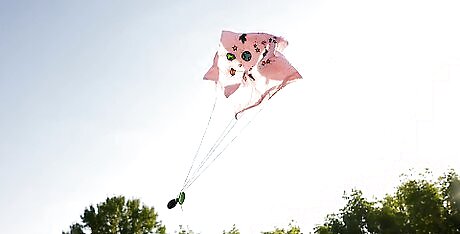
Observe the speed of your parachute. Note the rate at which your parachute is falling? Is your parachute falling quickly to the ground or gliding slowing to the ground? If it is moving towards the ground at a rapid pace, the weight it too heavy or the parachute sail is too small. Try attaching a lighter object to your parachute, such as a feather or paperclips, or create a larger sail. If your parachute is moving too slowly towards the ground, the weight is too light or the the parachute sail is too big. To change the speed, attach a heavier item to your parachute, like a rock, or create a smaller parachute sail. Feel free to experiment with different weights and sail sizes.
Making Parachutes out of Tissue Paper

Cut out a square parachute sail from a piece of tissue paper. Unfold a sheet of tissue paper and lay it on a flat work surface. Use a ruler and pencil to measure and mark a square with side lengths of 14 inches. Cut out the square with a pair of scissors.

Place scotch tape around each corner and punch a hole into in corner. Retrieve a roll of scotch tape and rip four 1 inch (2.5 cm) pieces. Set the pieces on the edge of your work space. Place 1 piece of tape on the top left corner—place ½ inch on the top of the tissue paper, fold the tape over, and adhere it to the bottom of the tissue paper. Insert the reinforced corner into a hole punch and create a hole. Repeat this process on the remaining corners. The tape will reinforce the corner and prevent the tissue paper from ripping.
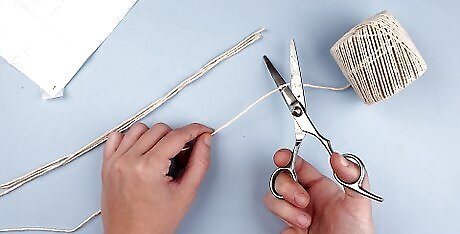
Cut four strings 16 inches (40.6 cm) in length. Unwind the string and cut off a strand that is approximately 16 inches (40.6 cm) long. Unwind more string. Lay the cut strand next to the unwound string to use as a ruler. Cut the second strand the same length as the first. Cut 2 more lengths of string.
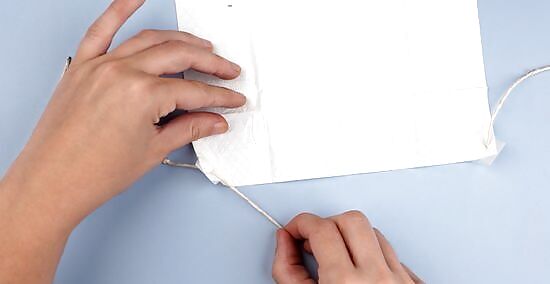
Insert 1 sting into each corner hole. Thread 1 string into the top left corner of the tissue paper sail. Tie the string in a loose loop. Tie 1 string in each of the 3 remaining corners.
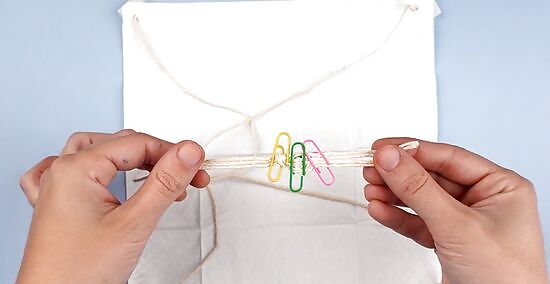
Tie the strings together and attach paperclips. Gather the 4 strings together 1 inch (2.5 cm) from the bottom. Tie the strands together in a knot. Hook 3 to 7 paperclips in a chain to the bottom of the strings. Hook the first paperclip over the knot.

Release your paper parachute. After completely the construction of your parachute, it is ready to launch. You may release the parachute from the highest point in your house, the top of your favorite outdoor play place, or throw it up in the air. Once you have selected a launch zone, climb up, release your parachute, and observe it until it reaches the ground safely.
Making Parachutes out of Coffee Filters
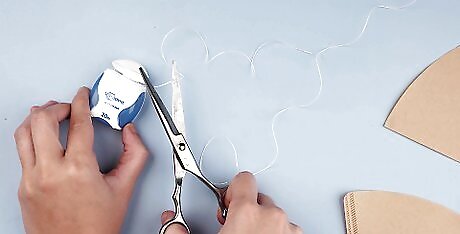
Cut 2 even lengths of dental floss. Unwind and cut one 2 foot (0.61 m) strand of dental floss. Unwind more dental floss from the roll. Cut a second 2 foot (0.61 m) strand of dental floss.

Punch 4 small holes through the coffee filter. Spread out the pleats of a coffee filter and fold it in half. Use a pair of scissors to create 1 set of 2 small slits approximately 1 inch (2.5 cm) below the fold line and 1 inch (2.5 cm) from the left outer edge. Repeat on the right side.
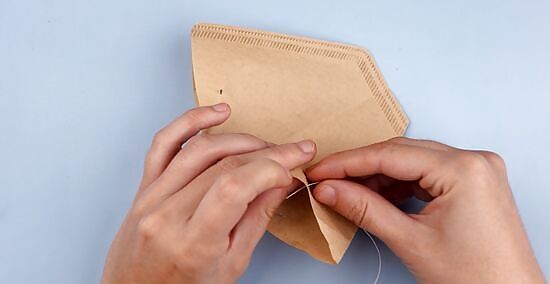
Insert 1 string into each hole and secure the ends with tape. Unfold the filter. Insert 1 end of a strand of floss into the top left hole. Pull 1 inch (2.5 cm) of floss through the slit and attach it to the top of the filter with a piece of tape. Insert the other end of the strand through the bottom left hole. Pull 1 inch (2.5 cm) of floss through the slit and attach it to the top of the filter with a piece of tape. Repeat on the right.
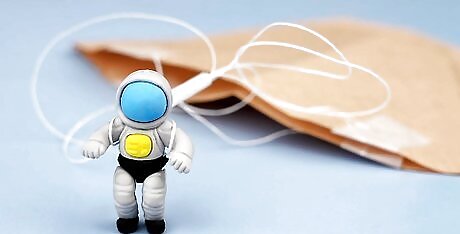
Place 1 string under each arm of an action figurine and watch your toy float to safety. Select an action figure or a Lego figure. Place 1 string under each of the action figure’s arms. Release your parachute from a high height and watch your toy soar to safety.
Making Parachutes out of Plastic Bags
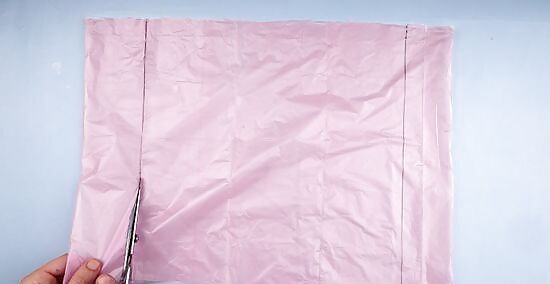
Cut a square sail out of a plastic shopping bag. Lay a plastic shopping bag on a flat surface. Smooth out any wrinkles or folds with your hands. Use a ruler and a permanent marker to measure and mark a square with side lengths of 12 inches (30.5 cm). Use a pair of scissors to cut along the lines. The size of a parachute sail determines the rate at which it falls. The smaller the sail, the faster it will fall; the larger the sail, the slower it will fall. Determine if you would like your parachute to fall quickly or slowly.
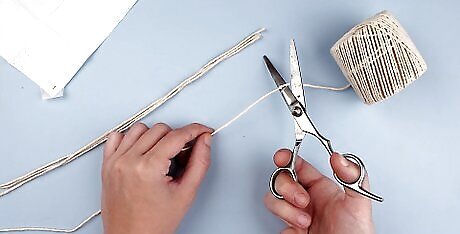
Cut 4 even strands of string. Unwind a spool of string and cut off a strand that is approximately 1 foot (0.30 m) long. Unwind more string. Lay the cut strand next to the unwound string as though it were a ruler. Cut a second strand the same length as the first. Cut 2 additional lengths of string in the same manner.

Tape 1 string to each corner of the parachute sail. Place 1 string diagonally in the top left corner of the sail—lay approximately ½ inch to 1 inch (2.5 cm) of string on the top of the sail. Attach the string to the sail with a piece of scotch tape. Attach 1 piece of string to each of the 3 remaining corners in the same manner.

Knot the strings together and attach a weighted object. Collect the 4 strings together 3 to 4 inches from the bottom. Tie the strands together in a knot. Select an object to attach to the parachute, such as a rock, an action figure, or paperclips. Use the 3 to 4 inch (7.6 to 10 cm) tails to secure the object to the parachute.

Launch the parachute. Once you have put away all of your tools, it is time to try your parachute. The ideal launch zone is located considerably high from the ground, such as the top of a bunk bed, over the railing of your stairs, or from the top of your favorite slide. You may also experiment with your parachute by throwing it up in the air from where you are standing. Select your launch zone. walk or climb to the top, and launch your parachute.

Note the speed of your parachute. Does your parachute appear to be falling too quickly? Or, is it moving towards the ground a slow rate? If you wish to change the speed of you parachute you can alter the weight or the parachute sail. If the parachute is moving too quickly, the weight is too heavy or the sail is too small. Try attaching a lighter weight object, such as a paperclip chain or even a feather, or create and attach a bigger parachute sail. If your parachute is moving too slowly, the weight is too light or the sail is too large. Swap the light weight object for something heavier, such as an action figure, or create and attach a smaller parachute sail. Feel free to experiment with different weights and sail sizes.




















Comments
0 comment